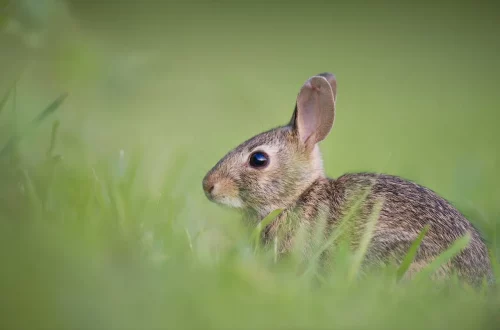
The Best Substrate for Your Ball Python: Top Choices Explained
When it comes to caring for a ball python, one of the most crucial aspects of their habitat is the substrate you choose. The substrate not only provides a comfortable and natural environment but also plays a significant role in the health and well-being of your pet. Selecting the right substrate can impact your snake’s behavior, digestion, and even humidity levels within the enclosure. Therefore, understanding the various options available is essential for any ball python owner.
Different substrates come with their own set of advantages and disadvantages, which can influence your decision based on your specific needs and the preferences of your python. Some substrates may promote better humidity retention, while others could be easier to clean. Additionally, certain materials may provide a more naturalistic feel, enhancing the overall aesthetic of the enclosure. As a responsible pet owner, it’s vital to consider factors such as safety, ease of maintenance, and comfort when selecting the ideal substrate for your ball python.
In this article, we will explore various substrate options, their characteristics, and how they can affect the habitat of your ball python. Whether you’re a first-time owner or a veteran reptile enthusiast, understanding the nuances of each substrate can help you create a safe and nurturing environment for your beloved pet.
Natural Substrates: Pros and Cons
Natural substrates, such as aspen shavings, coconut fiber, and cypress mulch, are popular choices among ball python owners. These materials not only mimic the natural habitat of these snakes but also provide a range of benefits. One of the primary advantages of natural substrates is their ability to retain moisture, which helps maintain humidity levels crucial for your python’s health.
Aspen shavings, for example, are lightweight and absorbent, making them easy to clean and maintain. They provide a comfortable surface for your snake to move around and burrow in, which can mimic their natural behavior. However, aspen shavings can become dusty, and excessive dust may irritate your snake’s respiratory system. It’s important to ensure that the shavings are kept clean and free of mold to minimize health risks.
Coconut fiber, also known as coir, is another excellent natural substrate. It is biodegradable and offers great moisture retention, which can help create a humid microenvironment within the enclosure. Furthermore, coconut fiber is free of chemicals and pesticides, making it a safe choice for your ball python. However, it can be a bit messy, as it tends to clump when wet, and it may require more frequent cleaning to prevent mold growth.
Cypress mulch is another popular option, known for its ability to maintain humidity levels effectively. It provides a natural look and feel to the enclosure while offering a comfortable surface for your snake. However, it is essential to ensure that the cypress mulch is from a sustainable source, as unsustainable harvesting can lead to environmental issues.
In summary, while natural substrates can enhance the overall habitat for your ball python, it is crucial to monitor their condition regularly, ensuring they remain clean and free from mold or excessive dust.
Commercial Substrates: Convenience and Safety
Commercial substrates have gained popularity among reptile enthusiasts due to their convenience and safety features. These substrates are pre-packaged and designed specifically for reptiles, often containing materials that promote hygiene and ease of use. Some of the common commercial options include paper towels, reptile carpet, and synthetic bedding.
Paper towels are a straightforward and cost-effective substrate option, especially for hatchlings and juvenile snakes. They are easy to replace and clean, allowing for quick maintenance of the enclosure. Additionally, paper towels provide a sterile surface, which can help reduce the risk of bacterial growth. However, they do not retain moisture well, which can be a drawback for maintaining appropriate humidity levels.
Reptile carpet is another popular commercial substrate, made from durable materials that are easy to clean. It offers a non-slip surface for your ball python, reducing the risk of injury. However, reptile carpets need to be washed regularly to prevent odors and bacteria build-up. While they do not provide a natural feel, they are an excellent choice for those seeking convenience and ease of maintenance.
Synthetic bedding options, such as eco-friendly pellets or granules, are designed to absorb moisture and minimize odors. They often mimic the texture of natural materials while being easier to clean and maintain. However, it’s essential to ensure that these products are safe for your snake, as some synthetic materials may contain harmful chemicals or additives.
In conclusion, commercial substrates offer a practical solution for ball python owners looking for convenience and safety. While they may not always replicate the natural environment, they can provide a clean and manageable habitat for your pet.
Choosing the Right Substrate for Your Ball Python
When selecting the right substrate for your ball python, several factors should be taken into account. Each option has its strengths and weaknesses, and understanding your snake’s specific needs will help you make an informed choice. One of the primary considerations is the age and size of your ball python. Juvenile snakes may benefit from substrates that provide better grip and ease of movement, while adults might prefer options that allow for more burrowing and exploration.
Another important factor is humidity. Ball pythons thrive in environments with moderate humidity levels, typically around 50-60%. Therefore, choosing a substrate that helps maintain this humidity is crucial. Natural substrates like coconut fiber and cypress mulch are excellent for moisture retention, while commercial options like paper towels may require additional humidity sources, such as a water dish or misting.
Additionally, consider your cleaning routine and maintenance preferences. If you prefer a low-maintenance solution, commercial substrates like reptile carpets may be more suitable. On the other hand, if you enjoy creating a naturalistic habitat, natural substrates might be more appealing, provided you are willing to invest the time in regular cleaning and upkeep.
Lastly, always ensure that whatever substrate you choose is safe for your ball python. Avoid substrates that could pose a choking hazard or contain harmful chemicals. It’s advisable to research and, if possible, read reviews from other snake owners to gauge the effectiveness and safety of your chosen substrate.
In summary, the right substrate for your ball python depends on various factors, including age, humidity needs, maintenance preferences, and safety. Taking the time to evaluate these aspects will help create a comfortable and healthy environment for your beloved pet.
Maintaining Your Ball Python’s Substrate
Proper maintenance of your ball python’s substrate is essential for ensuring their health and comfort. Regardless of the substrate type you choose, regular cleaning and monitoring are crucial to prevent issues such as mold growth, odors, and bacterial build-up.
For natural substrates, it is important to spot-clean daily. Remove any waste or uneaten food promptly to maintain hygiene. Additionally, replace sections of the substrate as needed, especially if you notice any signs of mold or unpleasant odors. A full substrate change should be conducted every few weeks, depending on the size of the enclosure and the type of substrate used.
For commercial substrates like paper towels or reptile carpets, the cleaning process is generally more straightforward. Paper towels can simply be replaced as needed, while reptile carpets should be washed and dried regularly. Make sure to use reptile-safe cleaners to avoid introducing harmful chemicals into the habitat.
Humidity levels should also be monitored regularly, especially if you are using substrates that retain moisture. Consider investing in a hygrometer to keep track of humidity levels, as both too high and too low humidity can lead to health issues for your ball python. If you notice that the humidity is too low, you can increase it by misting the substrate lightly or adding a larger water dish.
In conclusion, maintaining your ball python’s substrate is a vital part of their care. Regular cleaning, monitoring humidity levels, and ensuring the substrate remains safe and sanitary will contribute to a healthy and comfortable environment for your pet.
In summary, choosing the right substrate for your ball python is a multifaceted decision that can significantly impact their health and well-being. Whether you opt for natural or commercial substrates, understanding their characteristics and maintaining them properly is essential. Always prioritize your snake’s comfort and safety to create an enriching habitat that meets their needs.




